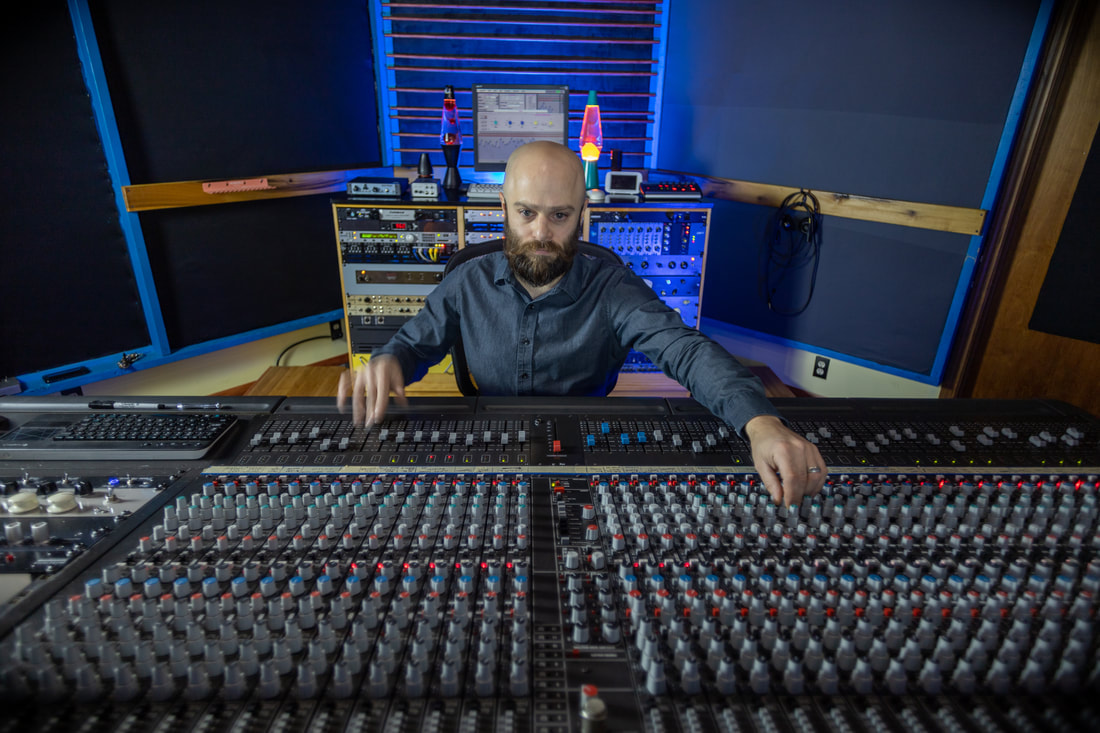Nick Gelyon was the session drummer on this record. He played the house kit on this. I used about 11 mics on the kit and recorded them mostly with vacuum tube preamps that I built. The overheads were recorded with Beyerdynamic ribbon mics into LBA Trinity channel strips. I know I used a lot of analog equipment when tracking not just the drums, but everything. EQ and compression was used on many of the drum microphones during tracking to get as much analog love happening before going into the computer. My sonic goals were warmth, punch, and clarity, and all of that with a colorful tone. A lot of creative production ideas happened during all aspects of the recording. For the vocals I chose to use a microphone and preamp combination that would naturally create a ton of color and even a subtle amount of distortion. That particular preamp choice was my old Altec 438C, which I heavily modified. If you put my Pearlman tube mic into that it breaks up in a very pleasing and subtle way. The 438C is a tube preamp from the 60's, but its also a variable-mu compressor. I think the sound of that compressor is similar to tape compression. Its just so darn colorful that I needed to use not one, but two EQ's after it to get the clarity needed for this record. Those were my tube powered passive EQ's, which are somewhat based on Pultec EQ's.
I played my frankenstein bass on this one. Its an Ibanez SR505 5-string bass in which I removed the stock electronics and replaced them with my own vacuum tube electronics. Yes, a tube powered bass. The bass was recorded DI into an LBA Trinity channel strip with a bit of compression from my DIY LA2A tube compressor. The signal was split and recorded "TI" into the computer for later reamping through my 1960's Ampeg B-15 bass amp, which was also recorded with a Trinity channel strip. I used those things on a lot of stuff on this record because of the wide range of tones you can get from them. The guitar recordings were all tracked through Trinity channel strips, as was the Theremin, the Leslie (hammond organ), and the percussion. The Hammond organ player on this record was Alex Sabuda. He of course played the house organ. I have 2 Leslie 147 speaker cabinets, however they are very different from each other. One sounds very pristine and looks it too. The other one is the one used on this record and I chose it because it sounds raunchy. That old beat up Leslie has a story to tell, but that's for another day! The Lead guitar parts were played by Paul Graves and the rhythm work was done by Doug Osborne-Coy. Both gents played their own guitars and recorded direct with an amp simulator. Later I removed the simulator from the session and reamped the guitars through various house guitar amplifiers. There's plenty of photos on facebook and instagram of this session if you dig around. You can learn more about this record by visiting www.facebook.com/osbornecoy/ or www.twitter.com/OsborneCoyMusic. You'll need to contact Doug Osborne-Coy through social media if you'd like to buy a copy of this 45. I can always help you get a copy if that doesn't work out. You can listen to it (in lesser quality) for free on sound cloud.
0 Comments
|
Details
AuthorMike Congilosi II, Producer and founder of Lightning Boy Audio shares occasional snippets of whats going on in the studio. Archives
March 2025
Categories |



 RSS Feed
RSS Feed